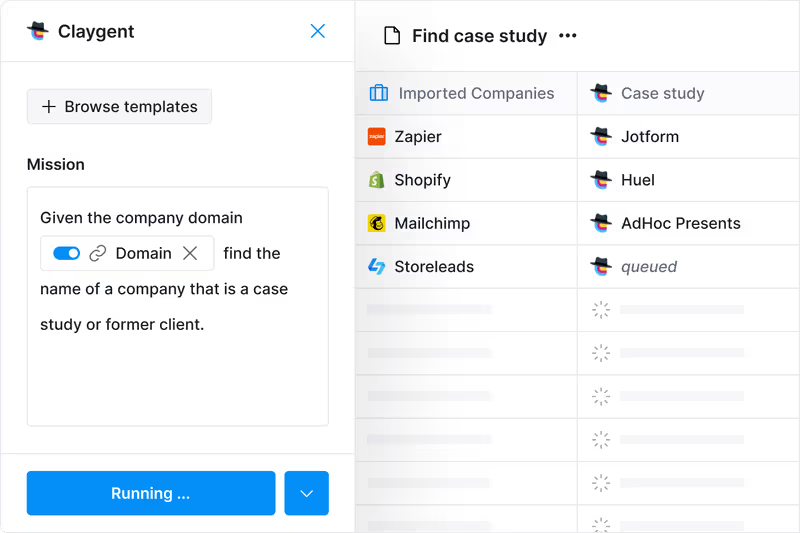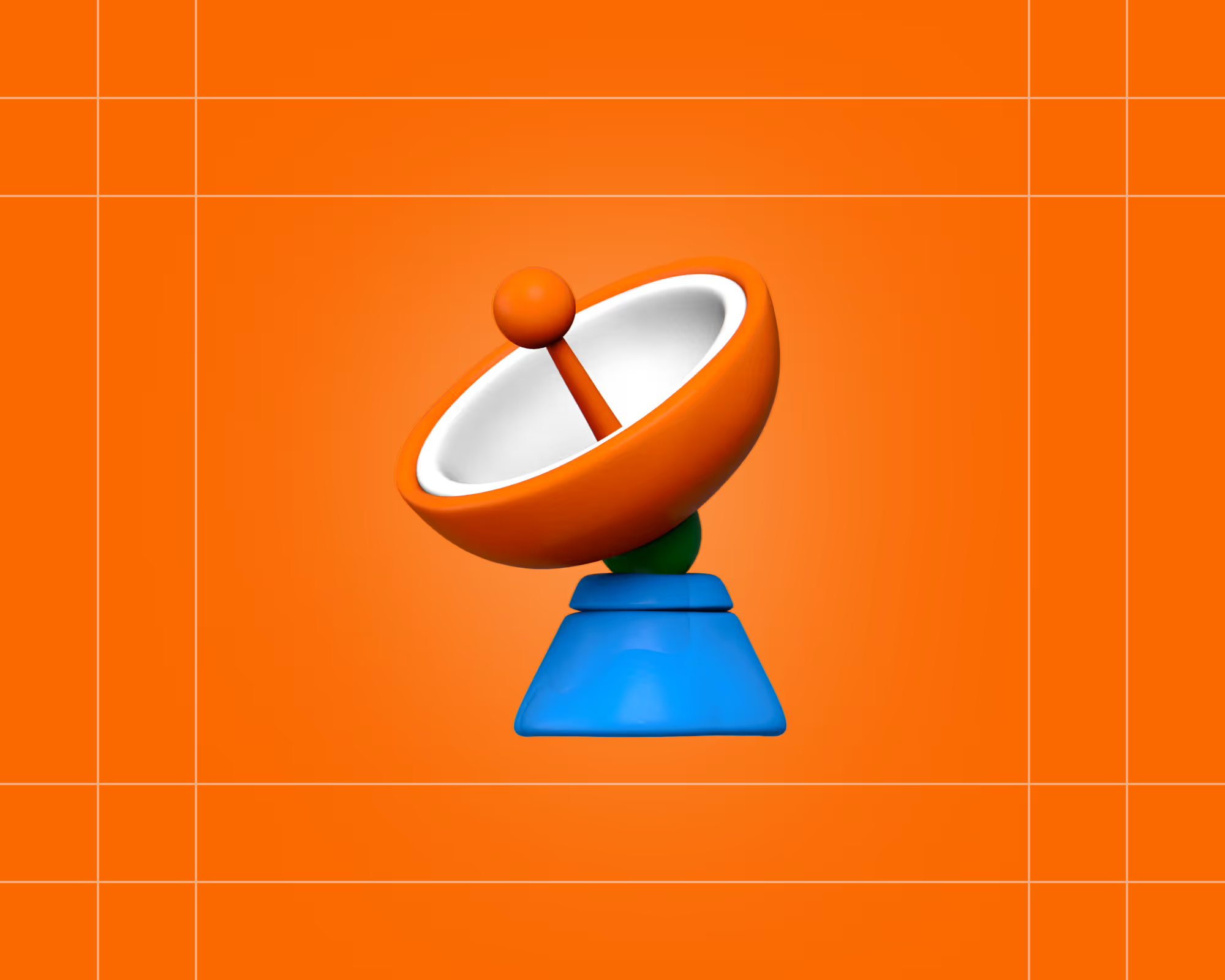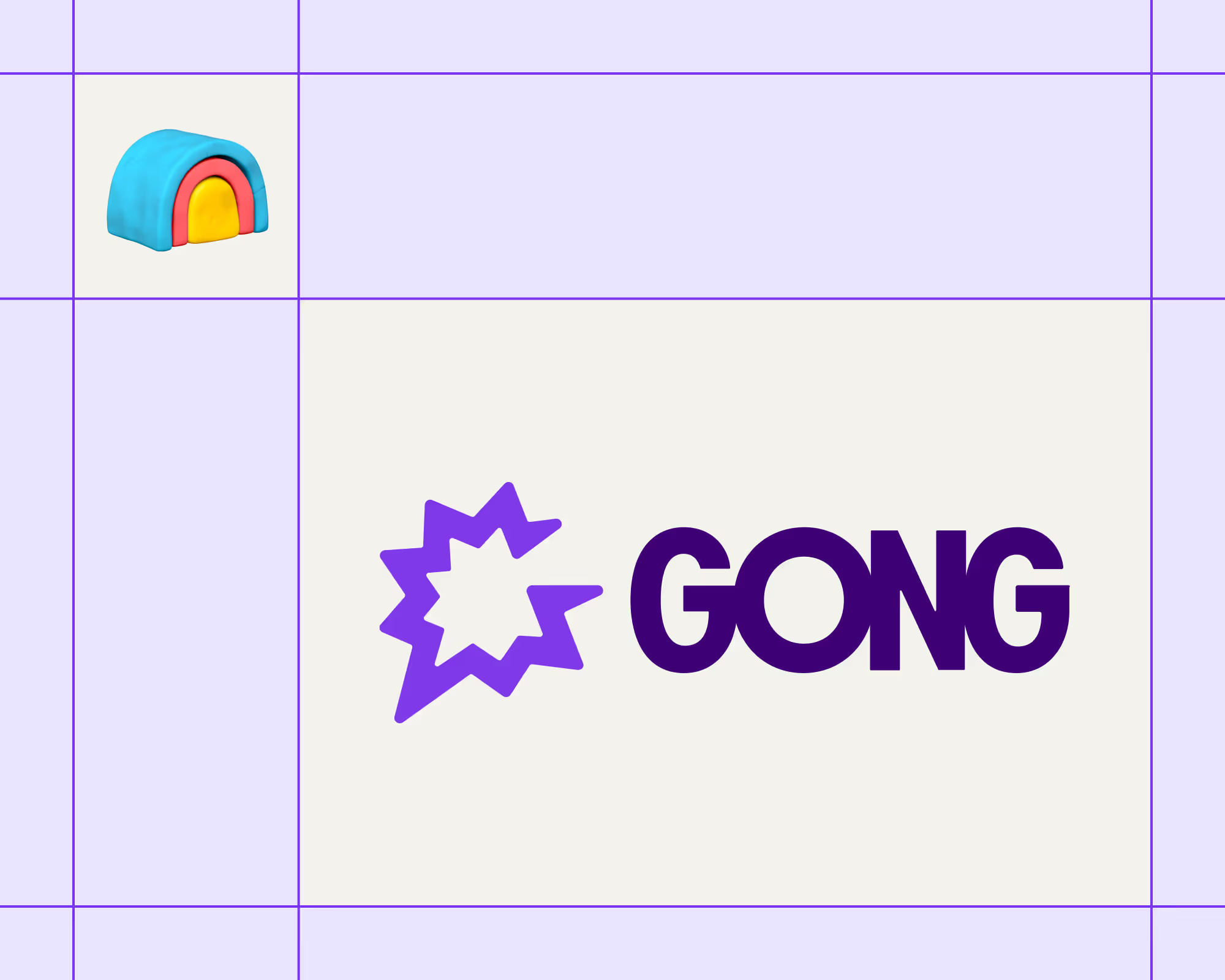Ever wish you had a magic wand that could help you collect and compare product prices, generate valuable info on your leads, research your competition, or identify market trends?
All these tasks took considerable time in the past, but that changed with web scraping. Now, you don’t need entire armies of people who spend weeks and months browsing the internet searching for the desired info—automated scraping tools can do the heavy lifting for you. 🏋️
If you’re unsure what scraping data from websites entails and how to leverage it to reach your business goals, you’ve knocked on the right door. This web scraping basics crash course will:
- Cover everything you should know about the process
- Suggest the best way to scrape websites to get valuable and reliable data in a jiff 🤗
What Is Web Scraping?

The simplest definition of web scraping is the process of obtaining data from a web page. Nowadays, web scraping doesn’t refer to manually copying and pasting data from a website and saving it into a file or spreadsheet.
The term is typically associated with web scraping tools—state-of-the-art platforms that automate the scraping process and can extract huge amounts of data without entire teams handling the process from the background. 🧑🤝🧑
How Does Web Scraping Work?
While you can find hundreds of automated web scrapers online, most have the same underlying mechanism:
- You download the software or extension and provide it with the URL you want to scrape data from
- The tool examines and downloads the page’s HTML code in a spreadsheet or database that you can access
Depending on your chosen tool, you could move beyond scraping and use enrichment options to enhance the existing information and make your database more powerful. You could then use the information to reach out to leads, analyze competition, or identify market trends.

The Benefits of Web Scraping
Before we cover each benefit in more detail, let’s zero in on the biggest appeals of web scraping:
- Cost- and time-efficiency
- Enhanced decision making
- Scalability
- Automation
- Versatility
- Easy integration into your workflows
Cost- and Time-Efficiency
With automated web scraping, you can replace entire teams of people manually researching the internet to find relevant data, allowing you to save money. The whole process takes a fraction of the time necessary for manual research—so you’ll also get results much faster. ⏩
The cherry on top is that automated web scraping ensures your data is up-to-date. Manual research means you spend hours, days, and even weeks collecting the data, depending on the project’s scope. By the time you finish, the collected data could be outdated and essentially worthless. Automated web scraping prevents this and ensures you always have fresh information at hand.
💡 Did You Know? Clay is an all-in-one tool that not only offers advanced data scraping options but also helps you enrich data, automate processes, and personalize campaigns—saving you both time and money.
Improved Decision Making
Whatever industry you’re in, making decisions impacting your company is no picnic since they could skyrocket or plummet your success.
Automated web scraping can alleviate uncertainty and lay a solid foundation for making informed, smart decisions that will set your company up for success. Having all the necessary data can help you recognize which direction to take and enjoy better outcomes. 🧭
Scalability
Quality web scraping tools can support your projects, no matter how big or small they are. Their flexibility allows your business to expand without constraints or the need to switch tools ever so often. ✅
Today, you can scrape social profiles from one source, while tomorrow, you can scrape thousands of websites in search of any info, and the tool will deliver results with the same efficiency.
Automation
Let’s say you own an e-commerce store and want to scrape product and pricing info from different websites a few times a day to keep your records updated and up your game.
Do you grit your teeth and accept your destiny of wasting hours manually checking every website? No!
Some web scraping tools automate this task by scheduling the web scraping process. Your only job is to choose the intervals at which you’d like the tool to perform scraping.
Versatility
One of the biggest appeals of quality web scraping tools is their versatility—there’s virtually no limit to the kind of data you can scrape (as long as it’s within legal regulations, of course). You can scrape:
- Products
- Prices
- Lead information
- Company case studies
- Social media posts
- Financial reports
This makes web scraping tools one of the best analytical weapons in your arsenal. They can analyze piles of data and extract exactly what you need at any given time.
💡 Pro Tip: Use Clay to scrape and enrich all types of info from various websites and databases.
Integration
You may think that adding yet another tool to your tech stack will make your life harder. You’ll need weeks to figure out how your scraping tool fits into your tech landscape and maybe even replace a few platforms to ensure everything works well together.
The good news is that quality web scraping tools seamlessly integrate with most apps, allowing you to effortlessly incorporate them into your workflows. 🖥️
💡 Did You Know? Clay integrates with 100+ apps, so you can easily fit it into your processes and minimize jumping between platforms.
What Is Web Scraping Used For?

Scraping websites for data is present in virtually any industry, from tourism to e-commerce.
The process can help startups and enterprises confidently climb the next step to reach their goals, whether that’s selling more products or services or learning how to adjust to new market conditions.
Here are some areas that commonly benefit from web scraping:
- Lead generation
- E-commerce
- Real estate
- Market research
- Media
Lead Generation
Generating leads is one of the most popular applications of web scraping. Sales professionals leverage web scrapers to extract data points like locations, phone numbers, email addresses, job titles, or work experience.
Advanced web scrapers like Clay even allow you to automate tasks like:
- Finding a user’s most recent social media posts
- Using Google Maps to find companies based on their location
The gathered info helps you spot high-value leads and provides a solid foundation for crafting personalized messages for prospecting via email, or another platform. This highly customized approach scores points with your leads—they’ll be impressed by your research skills and enthusiasm.
💡 Did you know? Clay can help you build lead lists by scraping data from thousands of websites or platforms.
E-commerce
E-commerce is an insanely competitive industry. Even if you’re selling niche products, chances are you’re competing against a huge number of companies. Both you and your competitors have the same goal—landing more clients and boosting revenue. 🏁
To gain a competitive edge, you need to keep a close eye on what others are doing and scrape their websites to analyze their:
- Offers
- Prices
- Strategies
For example, you could leverage price scraping tools to see your competitors' pricing strategies and adjust yours if necessary. You could also scrape product information to gain valuable insight into your competitors’ offers and inventories.
Another scenario in which web scraping helps is performance tracking—you can extract sales data to understand how many products you sold during a specific timeframe and identify trends.
Real Estate
As real estate agents often race each other to get new clients and spot market trends, the importance of getting reliable data on the fly is invaluable. 🏡
You can leverage automated web scraping to:
- ✔️ Extract prices from listings—Understand the market and use the info to determine how much a property is worth
- ✔️ Learn more about a property—Check public records for foreclosures, lack of permits, or different types of damage
- ✔️ Land new clients—Be the first to reach out to home sellers after gathering all the data you need to advertise and sell properties
Market Research
Let’s say you want to launch a new product. Before doing it, you need to conduct thorough research and see whether the market is ready for the launch. To understand how to pitch your product and generate interest, you’ll analyze:
- Competitive products
- Customer behavior and preferences
- Current trends
The web scraping process simplifies market research and helps you obtain reliable and valuable data to make smart decisions and keep your business moving forward. Through web scraping, you can zoom in on your competitors, identify your target customers, and spot market shifts early on, helping you maintain stability. ⚖️
Media
Media agencies, TV and radio stations, news portals, and other companies working in the industry can benefit immensely from web scraping. Web scraping can help you have instant access to the latest news and exciting stories you can investigate and report on.
Quality web scraping can help you stand out from your competition and be the first to publish a story and attract an audience. 🥇
Is Web Scraping Legal?
By its nature, web scraping is legal. In most cases, the data on a web page is available to the public, so you’re not stealing information—you’re just gathering the data anyone can access.
As it usually goes with laws and regulations, there are a few caveats to be aware of:
Is Web Scraping Easy?

The answer to this question depends on various factors such as:
- Your coding skills
- Web scraping method used
- Type of data you want to scrape
- The complexity of the website you wish to scrape
📢 You don’t have coding skills? No worries, you can still effortlessly scrape the web to get the desired data. The only action you need to take is to find a powerful and intuitive tool like Clay that can help you scrape data from websites without a single line of code.
Common Web Scraping Challenges
Scraping data from websites isn’t always smooth. There could be a few bumps in the road you’d need to go around to get to the desired data. Let’s take a look at the most common web scraping challenges and ways to overcome them:
What Is the Best Way To Scrape Websites?
Some of the methods you can employ to scrape websites include:
- Building your web scraping APIs
- Relying on optical character recognition (OCR)
- Setting up headless browsers
- Using Excel to scrape data
- Relying on specialized web scrapers
Using some of these methods boils down to compromise—OCR may be easy to use, but it doesn’t give the best results, while web scraping APIs are efficient but challenging to build if you’re not a programmer.
The best way to web scrape is to use specialized tools, and here’s why:
- They’re fast ⌛
- They require minimal involvement 🤏
- They help you automate work 🤖
- They’re scalable 📈
- They can connect to other apps you’re using and let you centralize work 🔄
How To Choose the Best Web Scraper
If you Google “web scrapers,” you’ll find hundreds of options in the search results, but that doesn’t mean you should randomly choose the one you’ll use. There are a few important factors to consider when selecting the best web scraper, such as:
If you want an intuitive platform that offers fantastic data scraping, enrichment, and outbound campaign personalization options—Clay should be your number one choice. 🌈
How Can Clay Help You Scrape Data From Websites?

Clay is a sales automation platform with options for data scraping, enrichment, and AI messaging. Use it to get valuable and reliable data from all over the internet and manage your outreach campaigns from start to end.
Let’s open with the tool’s easy-to-use Chrome extension—it lets you extract data from any website in only a few steps:
- Install the extension
- Visit the website you want to scrape
- Run the extension
- Save data to your Clay table
Another feature that simplifies scraping is Claygent—a revolutionary AI web scraper. Claygent automates the process of web scraping and eliminates the need for manual research. Using it couldn’t be simpler—you tell Claygent what data you need, and it will visit every corner of the internet until it gets you the information. In other words, with Claygent, you can find details about people and companies without lifting a finger. 😎

Want to save even more time? Use Clay’s web scraping templates for specific tasks, such as:
- ✔️ Scraping Indeed job listings to find the number of business locations
- ✔️ Finding numbers of open roles and employees based on a company URL
- ✔️ Finding local businesses and their contact info using Google Maps
Other Clay Features You’ll Love
Clay’s magic doesn’t end with scraping—the platform offers state-of-the-art enrichment and campaign personalization options.
Instead of tapping into a single database to extract info (like many of its alternatives), Clay can access over 50 data providers, giving you fantastic data coverage and a competitive edge. This powerful option also saves you money—you don’t pay for separate subscriptions for each data provider you fetch data from because you get access to all of them with your Clay account.
The tool uses waterfall enrichment to sequentially search databases and find the exact data points you need. Using it is simple—you choose the type of data you want and configure which providers Clay will tap into on its quest. As you pay only for the data you get, there are no unnecessary expenses. 💵
The long list of Clay’s handy features doesn’t end here either. Here’s a short overview of its other notable options:
The platform may be feature-packed, but this doesn’t stand in the way of its user-friendliness. Here’s what a user says about Clay’s intuitiveness:

Transparent and Flexible Pricing for Extra Convenience
Clay offers a free forever plan to let you get a feel for the platform and its options. If you like it, opt for one of Clay’s four paid plans.
Each plan comes with a certain amount of Clay credits—the currency you use for purchasing different actions in Clay, like scraping work emails or phone numbers.
Here’s a table overview of each plan:
All plans (yes, even the free forever one!) come with unlimited users, so you can grow your company without paying extra. 🚀
Create a Clay Account
Now that you’re familiar with Clay’s features, the only thing left to do is to create your account:
- Head to the signup page 👈
- Provide the necessary information
- Start exploring Clay’s options
To learn more about Clay, check out Clay University for detailed walkthroughs. Joining the platform’s Slack community and signing up for the newsletter is also an excellent idea—it will help you stay in the loop. 🧠
Ever wish you had a magic wand that could help you collect and compare product prices, generate valuable info on your leads, research your competition, or identify market trends?
All these tasks took considerable time in the past, but that changed with web scraping. Now, you don’t need entire armies of people who spend weeks and months browsing the internet searching for the desired info—automated scraping tools can do the heavy lifting for you. 🏋️
If you’re unsure what scraping data from websites entails and how to leverage it to reach your business goals, you’ve knocked on the right door. This web scraping basics crash course will:
- Cover everything you should know about the process
- Suggest the best way to scrape websites to get valuable and reliable data in a jiff 🤗
What Is Web Scraping?

The simplest definition of web scraping is the process of obtaining data from a web page. Nowadays, web scraping doesn’t refer to manually copying and pasting data from a website and saving it into a file or spreadsheet.
The term is typically associated with web scraping tools—state-of-the-art platforms that automate the scraping process and can extract huge amounts of data without entire teams handling the process from the background. 🧑🤝🧑
How Does Web Scraping Work?
While you can find hundreds of automated web scrapers online, most have the same underlying mechanism:
- You download the software or extension and provide it with the URL you want to scrape data from
- The tool examines and downloads the page’s HTML code in a spreadsheet or database that you can access
Depending on your chosen tool, you could move beyond scraping and use enrichment options to enhance the existing information and make your database more powerful. You could then use the information to reach out to leads, analyze competition, or identify market trends.

The Benefits of Web Scraping
Before we cover each benefit in more detail, let’s zero in on the biggest appeals of web scraping:
- Cost- and time-efficiency
- Enhanced decision making
- Scalability
- Automation
- Versatility
- Easy integration into your workflows
Cost- and Time-Efficiency
With automated web scraping, you can replace entire teams of people manually researching the internet to find relevant data, allowing you to save money. The whole process takes a fraction of the time necessary for manual research—so you’ll also get results much faster. ⏩
The cherry on top is that automated web scraping ensures your data is up-to-date. Manual research means you spend hours, days, and even weeks collecting the data, depending on the project’s scope. By the time you finish, the collected data could be outdated and essentially worthless. Automated web scraping prevents this and ensures you always have fresh information at hand.
💡 Did You Know? Clay is an all-in-one tool that not only offers advanced data scraping options but also helps you enrich data, automate processes, and personalize campaigns—saving you both time and money.
Improved Decision Making
Whatever industry you’re in, making decisions impacting your company is no picnic since they could skyrocket or plummet your success.
Automated web scraping can alleviate uncertainty and lay a solid foundation for making informed, smart decisions that will set your company up for success. Having all the necessary data can help you recognize which direction to take and enjoy better outcomes. 🧭
Scalability
Quality web scraping tools can support your projects, no matter how big or small they are. Their flexibility allows your business to expand without constraints or the need to switch tools ever so often. ✅
Today, you can scrape social profiles from one source, while tomorrow, you can scrape thousands of websites in search of any info, and the tool will deliver results with the same efficiency.
Automation
Let’s say you own an e-commerce store and want to scrape product and pricing info from different websites a few times a day to keep your records updated and up your game.
Do you grit your teeth and accept your destiny of wasting hours manually checking every website? No!
Some web scraping tools automate this task by scheduling the web scraping process. Your only job is to choose the intervals at which you’d like the tool to perform scraping.
Versatility
One of the biggest appeals of quality web scraping tools is their versatility—there’s virtually no limit to the kind of data you can scrape (as long as it’s within legal regulations, of course). You can scrape:
- Products
- Prices
- Lead information
- Company case studies
- Social media posts
- Financial reports
This makes web scraping tools one of the best analytical weapons in your arsenal. They can analyze piles of data and extract exactly what you need at any given time.
💡 Pro Tip: Use Clay to scrape and enrich all types of info from various websites and databases.
Integration
You may think that adding yet another tool to your tech stack will make your life harder. You’ll need weeks to figure out how your scraping tool fits into your tech landscape and maybe even replace a few platforms to ensure everything works well together.
The good news is that quality web scraping tools seamlessly integrate with most apps, allowing you to effortlessly incorporate them into your workflows. 🖥️
💡 Did You Know? Clay integrates with 100+ apps, so you can easily fit it into your processes and minimize jumping between platforms.
What Is Web Scraping Used For?

Scraping websites for data is present in virtually any industry, from tourism to e-commerce.
The process can help startups and enterprises confidently climb the next step to reach their goals, whether that’s selling more products or services or learning how to adjust to new market conditions.
Here are some areas that commonly benefit from web scraping:
- Lead generation
- E-commerce
- Real estate
- Market research
- Media
Lead Generation
Generating leads is one of the most popular applications of web scraping. Sales professionals leverage web scrapers to extract data points like locations, phone numbers, email addresses, job titles, or work experience.
Advanced web scrapers like Clay even allow you to automate tasks like:
- Finding a user’s most recent social media posts
- Using Google Maps to find companies based on their location
The gathered info helps you spot high-value leads and provides a solid foundation for crafting personalized messages for prospecting via email, or another platform. This highly customized approach scores points with your leads—they’ll be impressed by your research skills and enthusiasm.
💡 Did you know? Clay can help you build lead lists by scraping data from thousands of websites or platforms.
E-commerce
E-commerce is an insanely competitive industry. Even if you’re selling niche products, chances are you’re competing against a huge number of companies. Both you and your competitors have the same goal—landing more clients and boosting revenue. 🏁
To gain a competitive edge, you need to keep a close eye on what others are doing and scrape their websites to analyze their:
- Offers
- Prices
- Strategies
For example, you could leverage price scraping tools to see your competitors' pricing strategies and adjust yours if necessary. You could also scrape product information to gain valuable insight into your competitors’ offers and inventories.
Another scenario in which web scraping helps is performance tracking—you can extract sales data to understand how many products you sold during a specific timeframe and identify trends.
Real Estate
As real estate agents often race each other to get new clients and spot market trends, the importance of getting reliable data on the fly is invaluable. 🏡
You can leverage automated web scraping to:
- ✔️ Extract prices from listings—Understand the market and use the info to determine how much a property is worth
- ✔️ Learn more about a property—Check public records for foreclosures, lack of permits, or different types of damage
- ✔️ Land new clients—Be the first to reach out to home sellers after gathering all the data you need to advertise and sell properties
Market Research
Let’s say you want to launch a new product. Before doing it, you need to conduct thorough research and see whether the market is ready for the launch. To understand how to pitch your product and generate interest, you’ll analyze:
- Competitive products
- Customer behavior and preferences
- Current trends
The web scraping process simplifies market research and helps you obtain reliable and valuable data to make smart decisions and keep your business moving forward. Through web scraping, you can zoom in on your competitors, identify your target customers, and spot market shifts early on, helping you maintain stability. ⚖️
Media
Media agencies, TV and radio stations, news portals, and other companies working in the industry can benefit immensely from web scraping. Web scraping can help you have instant access to the latest news and exciting stories you can investigate and report on.
Quality web scraping can help you stand out from your competition and be the first to publish a story and attract an audience. 🥇
Is Web Scraping Legal?
By its nature, web scraping is legal. In most cases, the data on a web page is available to the public, so you’re not stealing information—you’re just gathering the data anyone can access.
As it usually goes with laws and regulations, there are a few caveats to be aware of:
Is Web Scraping Easy?

The answer to this question depends on various factors such as:
- Your coding skills
- Web scraping method used
- Type of data you want to scrape
- The complexity of the website you wish to scrape
📢 You don’t have coding skills? No worries, you can still effortlessly scrape the web to get the desired data. The only action you need to take is to find a powerful and intuitive tool like Clay that can help you scrape data from websites without a single line of code.
Common Web Scraping Challenges
Scraping data from websites isn’t always smooth. There could be a few bumps in the road you’d need to go around to get to the desired data. Let’s take a look at the most common web scraping challenges and ways to overcome them:
What Is the Best Way To Scrape Websites?
Some of the methods you can employ to scrape websites include:
- Building your web scraping APIs
- Relying on optical character recognition (OCR)
- Setting up headless browsers
- Using Excel to scrape data
- Relying on specialized web scrapers
Using some of these methods boils down to compromise—OCR may be easy to use, but it doesn’t give the best results, while web scraping APIs are efficient but challenging to build if you’re not a programmer.
The best way to web scrape is to use specialized tools, and here’s why:
- They’re fast ⌛
- They require minimal involvement 🤏
- They help you automate work 🤖
- They’re scalable 📈
- They can connect to other apps you’re using and let you centralize work 🔄
How To Choose the Best Web Scraper
If you Google “web scrapers,” you’ll find hundreds of options in the search results, but that doesn’t mean you should randomly choose the one you’ll use. There are a few important factors to consider when selecting the best web scraper, such as:
If you want an intuitive platform that offers fantastic data scraping, enrichment, and outbound campaign personalization options—Clay should be your number one choice. 🌈
How Can Clay Help You Scrape Data From Websites?

Clay is a sales automation platform with options for data scraping, enrichment, and AI messaging. Use it to get valuable and reliable data from all over the internet and manage your outreach campaigns from start to end.
Let’s open with the tool’s easy-to-use Chrome extension—it lets you extract data from any website in only a few steps:
- Install the extension
- Visit the website you want to scrape
- Run the extension
- Save data to your Clay table
Another feature that simplifies scraping is Claygent—a revolutionary AI web scraper. Claygent automates the process of web scraping and eliminates the need for manual research. Using it couldn’t be simpler—you tell Claygent what data you need, and it will visit every corner of the internet until it gets you the information. In other words, with Claygent, you can find details about people and companies without lifting a finger. 😎

Want to save even more time? Use Clay’s web scraping templates for specific tasks, such as:
- ✔️ Scraping Indeed job listings to find the number of business locations
- ✔️ Finding numbers of open roles and employees based on a company URL
- ✔️ Finding local businesses and their contact info using Google Maps
Other Clay Features You’ll Love
Clay’s magic doesn’t end with scraping—the platform offers state-of-the-art enrichment and campaign personalization options.
Instead of tapping into a single database to extract info (like many of its alternatives), Clay can access over 50 data providers, giving you fantastic data coverage and a competitive edge. This powerful option also saves you money—you don’t pay for separate subscriptions for each data provider you fetch data from because you get access to all of them with your Clay account.
The tool uses waterfall enrichment to sequentially search databases and find the exact data points you need. Using it is simple—you choose the type of data you want and configure which providers Clay will tap into on its quest. As you pay only for the data you get, there are no unnecessary expenses. 💵
The long list of Clay’s handy features doesn’t end here either. Here’s a short overview of its other notable options:
The platform may be feature-packed, but this doesn’t stand in the way of its user-friendliness. Here’s what a user says about Clay’s intuitiveness:

Transparent and Flexible Pricing for Extra Convenience
Clay offers a free forever plan to let you get a feel for the platform and its options. If you like it, opt for one of Clay’s four paid plans.
Each plan comes with a certain amount of Clay credits—the currency you use for purchasing different actions in Clay, like scraping work emails or phone numbers.
Here’s a table overview of each plan:
All plans (yes, even the free forever one!) come with unlimited users, so you can grow your company without paying extra. 🚀
Create a Clay Account
Now that you’re familiar with Clay’s features, the only thing left to do is to create your account:
- Head to the signup page 👈
- Provide the necessary information
- Start exploring Clay’s options
To learn more about Clay, check out Clay University for detailed walkthroughs. Joining the platform’s Slack community and signing up for the newsletter is also an excellent idea—it will help you stay in the loop. 🧠






















.avif)











.avif)
.avif)






















































